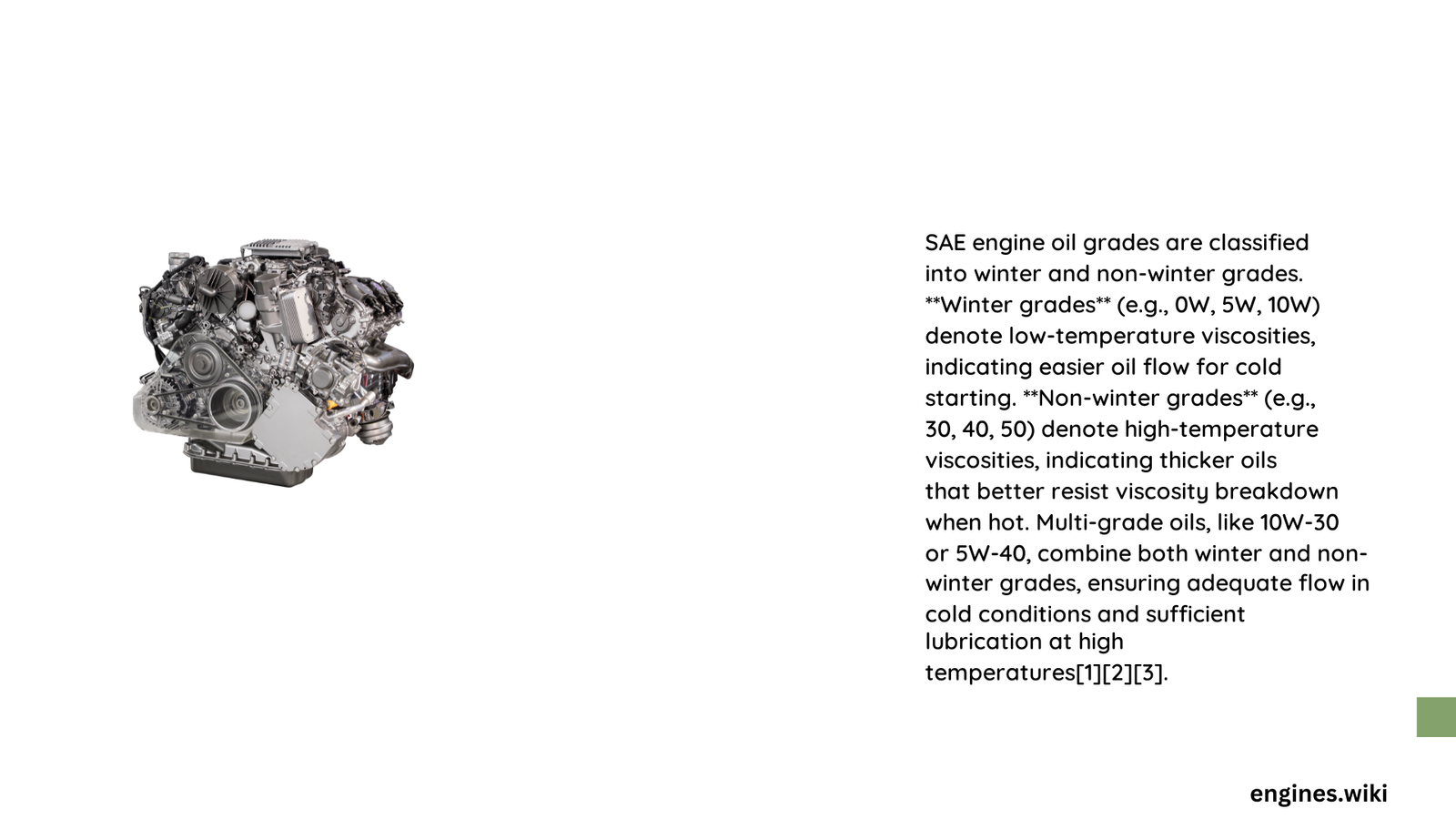SAE engine oil grades represent a critical standardization system that defines motor oil viscosity and performance across different temperature ranges. These grades help automotive professionals and vehicle owners select the most appropriate lubricant for their specific engine requirements, ensuring optimal protection, efficiency, and longevity of automotive powertrains.
What Are SAE Engine Oil Grades?
SAE (Society of Automotive Engineers) engine oil grades classify motor oils based on their viscosity characteristics at different temperatures. These grades provide a standardized method to understand how engine oils will perform under various operating conditions.
Key Characteristics of SAE Engine Oil Grades
| Grade Type | Temperature Performance | Typical Applications |
|---|---|---|
| Monograde | Fixed viscosity | Specialized/vintage engines |
| Multigrade | Variable temperature range | Modern passenger vehicles |
How Do SAE Viscosity Ratings Work?

Cold Temperature Performance
The first number in multigrade oils (e.g., 0W, 5W) indicates cold-start viscosity:
– 0W: Exceptional cold flow properties
– 5W: Good cold-temperature performance
– 10W: Standard winter performance
Hot Temperature Performance
The second number represents high-temperature viscosity:
– 20: Light viscosity
– 30: Standard viscosity
– 40: Higher viscosity protection
– 50: Heavy-duty protection
Why SAE Engine Oil Grades Matter
Performance Implications
- Fuel Efficiency: Correct oil grade reduces friction
- Engine Protection: Maintains proper lubrication
- Temperature Adaptability: Performs across diverse conditions
Selecting the Right SAE Engine Oil Grade
Factors to Consider
- Vehicle manufacturer recommendations
- Climate conditions
- Driving habits
- Engine age and design
Common SAE Multigrade Oil Recommendations
- 0W-20: Modern fuel-efficient vehicles
- 5W-30: Broad temperature range protection
- 10W-40: Older engines, mixed driving conditions
- 5W-40: High-performance vehicles
Technical Testing Standards
Viscosity Measurement Methods
- Cold Cranking Simulator (CCS)
- Mini-Rotary Viscometer
- Kinematic Viscosity Test
Advanced Considerations
Beyond Basic Viscosity
Modern SAE grades also incorporate:
– Wear protection ratings
– Thermal stability
– Oxidation resistance
Emerging Trends in SAE Oil Grades
- Lower viscosity oils for improved fuel economy
- Enhanced synthetic formulations
- Increased focus on emissions reduction
Practical Selection Guide
Quick Recommendation Matrix
| Climate | Recommended SAE Grade |
|---|---|
| Cold Regions | 0W-20, 0W-30 |
| Moderate Regions | 5W-30, 5W-40 |
| Hot Regions | 10W-40, 15W-40 |
Expert Tips
- Always consult your vehicle’s manual
- Consider professional recommendations
- Monitor oil performance regularly
Reference:
– SAE Viscosity Grades – Engine Oils
– Engine Oil Grades Guide
– Oil Service Classifications
